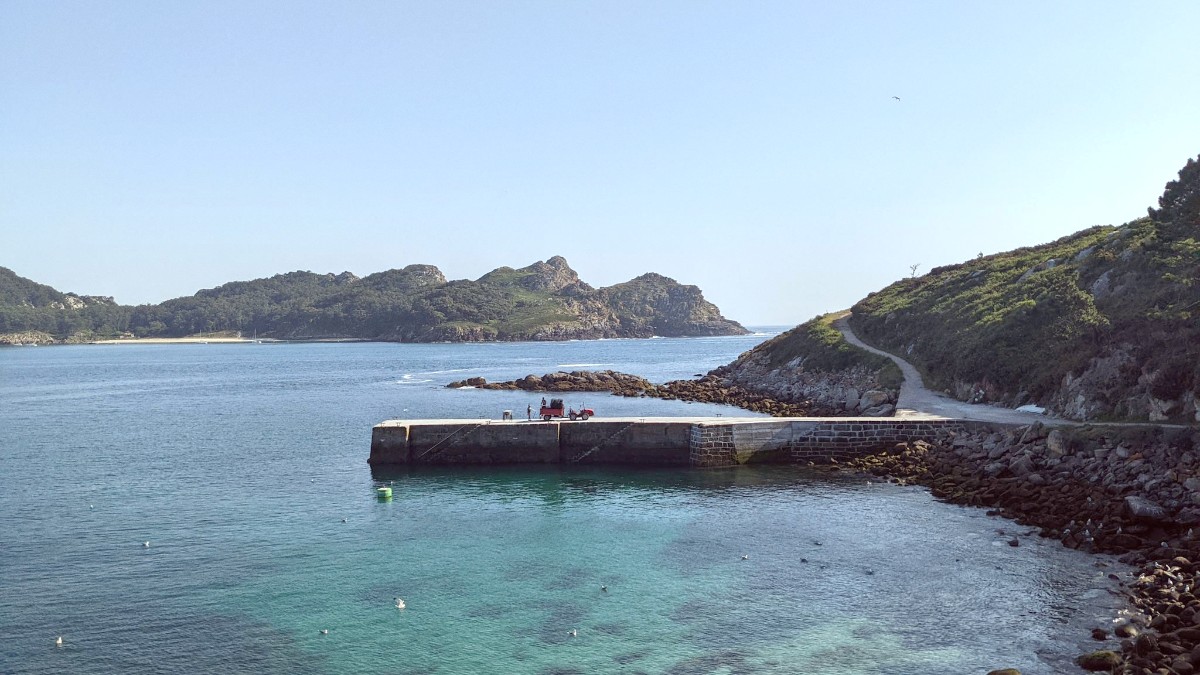
Spain
Vigo's public transport relies mainly on its extensive bus network, operated by Vitrasa. The city does not have a metro or tram system. Buses cover all major neighborhoods, attractions, and surrounding areas. This makes them a good option for getting around, specifically given Vigo's hilly terrain.
The Vitrasa bus network is comprehensive, reaching most city parts. Central hubs for bus connections include Urzáiz (near the modern train station and Vialia shopping center), Porta do Sol, Praza de Compostela, and Gran Vía. These areas feature multiple bus stops serving various lines, making transfers simple. You find detailed route maps and schedules on the official Vitrasa website. Many bus stops also display route maps.
Licensed taxis are white with a green roof light. Hail on street or find at stands. Fares: min €4-€5, city ride €5-€15. Airport transfers €20-€25. Surcharges apply. Cash accepted, many accept cards. Cabify and FREENOW apps work in Vigo.
Car Rental: Valid driving license + IDP for non-EU. Credit card for deposit. Major companies (Hertz, Avis, Europcar) at airport/stations. Book ahead. Motorcycle/Scooter: Less common, local shops. Bicycle: Vigo en Bici (municipal), private shops rent bikes and e-bikes. E-bikes for hills.
Walking: Casco Vello (pedestrianized, charming). Paseo Marítimo (promenade, flat). Centro Urbano (shopping streets, wide sidewalks). Parque do Castro (uphill, panoramic views). Guided and self-guided tours available. Cycling: Expanding network of bike lanes. Hilly in some areas (e-bikes helpful). Helmets recommended.
Drive on the right side of the road.
Mandatory for all occupants.
Strictly prohibited while driving.
50 km/h urban (some 30), 120 km/h highways.
Vigo provides various accommodation types to suit different preferences and budgets. This section helps you choose the best lodging for your stay.
High Season (July-Aug) & Major Festivals: 2-4 months ahead. Shoulder Season (May-June, Sep-Oct): 1-2 months ahead. Low Season (Nov-April): A few weeks ahead.
Trusted platforms: Booking.com, Expedia, Airbnb. Check local hotel websites for deals. Always verify deposit and cancellation policies. Non-refundable rates are cheaper but riskier.
Prices rise significantly in high season and around major holidays (Easter, Christmas), potentially doubling or tripling. Weekends and local festivals also see price increases.
Here is a comparison and specific recommendations for different traveler types, helping you choose the perfect place to stay in Vigo.
Hostel Dorm / Basic Guesthouse (Pensión)
€20-€70 (approx. Per night)
3-Star Hotel / Vacation Rental
€60-€120 (approx. Per night)
4-5 Star Hotel / Boutique Hotel
€100-€300+ (approx. Per night)
Vigo's culinary scene is a highlight, deeply rooted in its maritime heritage. Fresh seafood is abundant and local dishes offer authentic Galician flavors. Explore diverse dining options.
Vigo has growing options. Look for "vegetariano" or "vegano" on menus. Many traditional dishes use vegetables (e.g., pimientos de padrón). Always ask if a dish contains animal products, as "vegetariano" sometimes includes fish.
Awareness of gluten-free (sin gluten) is increasing in Spain. Many restaurants can cater to this, especially for seafood and rice dishes. Always communicate your needs clearly. Bring gluten-free snacks if a specific brand is needed.
Communicate all food allergies clearly to restaurant staff. Carry a translation card with your specific allergies in Spanish and Galician. Spanish law requires restaurants to provide allergen information for menu items.
Explore the side streets of the Casco Vello for authentic, less touristy tapas bars and seafood spots. These often have the freshest local fare and a genuine atmosphere.
Do not hesitate to try new things, especially the local seafood specialties. Vigo is a paradise for seafood lovers!